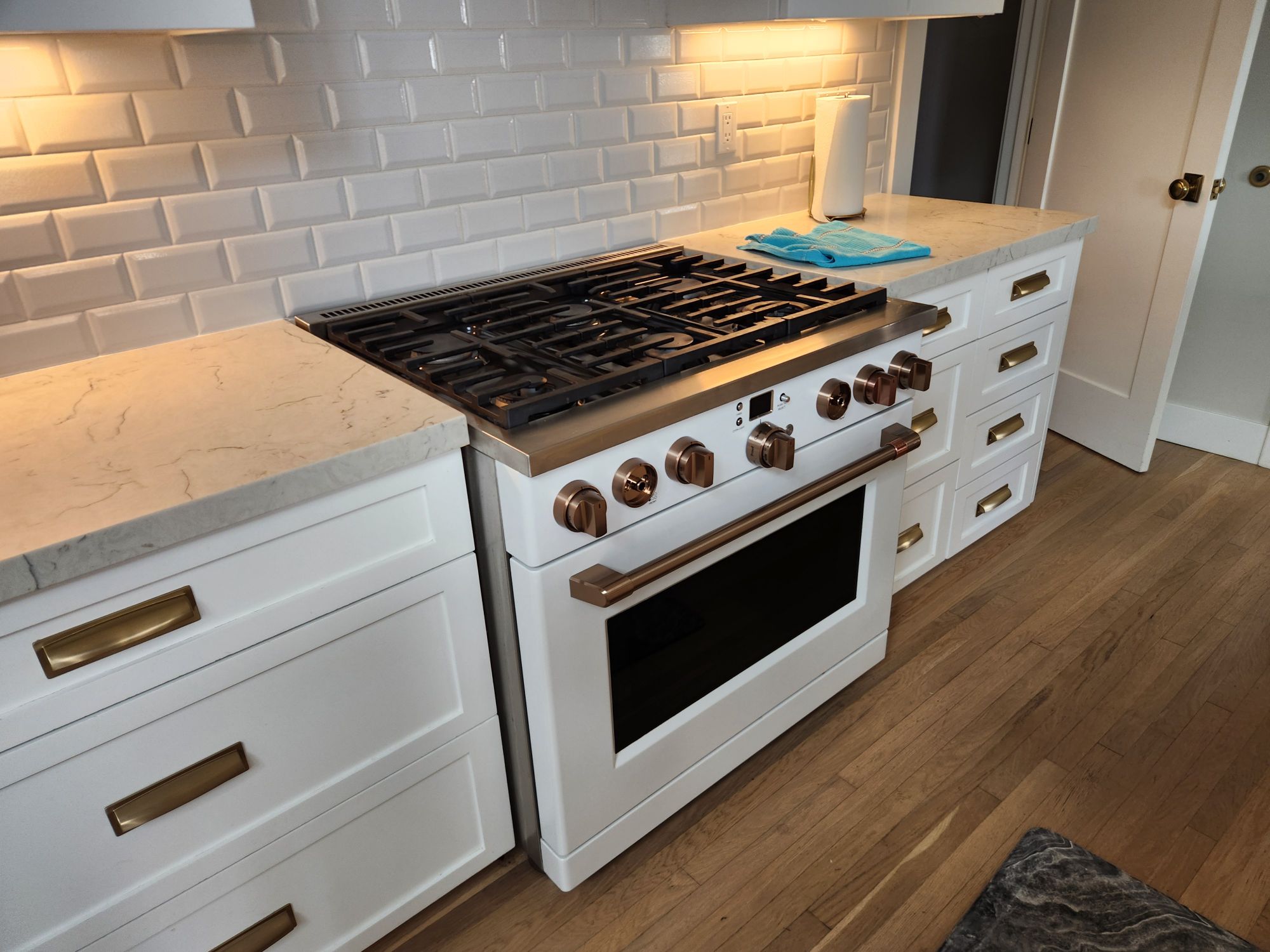Your oven says 350°F, but your cookies come out burned on the edges and raw in the center. Sound familiar? An oven with a temperature that doesn’t match the setting is a frustrating and common issue that can sabotage your cooking, ruin meals, and cost you time and money in wasted ingredients. Inconsistent temperatures can lead to food being overcooked, undercooked, or cooked unevenly, causing both safety concerns and culinary disappointment.
Let’s explore the causes of this issue, how to identify it, and what you can do about it.
How Oven Temperature Should Work
Modern ovens use thermostats or temperature sensors to regulate heat. When you set the oven to 375°F, it should cycle on and off to maintain that temperature. However, the reality is often more complex. All ovens experience some fluctuation — typically within 10-20 degrees — but when the variation becomes larger or persistent, something isn’t working as it should.
Signs Your Oven Temperature is Inaccurate
- Burned or Undercooked Food Consistently
If you follow recipes to the letter but your food turns out wrong, temperature inconsistency could be the culprit. - Uneven Baking
One side of the pan is crisp, while the other remains soggy? This could indicate hot or cold spots inside the oven. - Longer or Shorter Cooking Times
Recipes that should take 20 minutes suddenly take 35, or burn in 10, are another clue something is off. - Discoloration of Food
If baked goods are too pale or unusually dark even when cooked through, the heat may not be evenly distributed.
Common Causes of Temperature Inaccuracy
1. Faulty Temperature Sensor or Thermostat
In most modern ovens, a temperature sensor monitors the interior heat and signals the control board when the target temperature is reached. If this sensor is damaged, dirty, or failing, it may give incorrect readings, causing the oven to overheat or not heat enough.
2. Oven Calibration Issues
Over time, ovens can “drift” from their factory settings. If the calibration is off, the displayed temperature won’t match the actual interior temperature. This is a common issue, especially in older ovens.
3. Broken Heating Element
In electric ovens, the bake or broil element may fail or partially function, causing uneven or inadequate heating. You may notice the oven taking longer to preheat or not reaching the desired temperature.
4. Faulty Control Board
The electronic control board governs the oven’s functions. If it’s defective, it might not send the correct signals to the heating elements, leading to temperature problems.
5. Door Seal Leaks
A worn or torn door gasket lets heat escape, preventing the oven from maintaining a steady temperature. This subtle leak can significantly affect cooking performance.
6. Power Supply Problems
If your oven receives inconsistent voltage due to wiring or power supply issues, it may not heat evenly or at all. This is more common in older homes or during high appliance usage.
How to Test and Verify Oven Temperature
You don’t need to be an appliance technician to perform a basic test:
- Use an Oven Thermometer: Place an oven-safe thermometer in the center of the oven. Preheat to a specific temperature (e.g., 350°F) and check the actual reading after 10-15 minutes.
- Repeat the test at different settings to see if the issue is consistent or varies with temperature levels.
- Check Multiple Zones: Move the thermometer around inside the oven to detect hot or cold spots.
If you notice significant discrepancies (more than 25 degrees), it’s time for a professional evaluation.
When to Call a Professional
If recalibrating the temperature manually doesn’t solve the issue, or you suspect a hardware malfunction (like a sensor or heating element), it’s time to call in the experts. DIY attempts to repair electronic components can be dangerous and may worsen the problem if not handled correctly.
Preventive Tips for Oven Temperature Issues
- Avoid slamming the door, which can damage the sensor or gasket.
- Clean spills promptly to prevent buildup on the sensor or heating elements.
- Check the door seal regularly and replace if it’s cracked or loose.
- Have your oven inspected annually if you use it frequently or notice temperature irregularities.
Consistent Temperature = Better Cooking
Whether you’re a home baker or someone who relies on quick weeknight meals, a well-functioning oven is key. If your oven’s temperature doesn’t match the setting, it doesn’t just affect your food—it wastes energy and time.
Let Us Help You Bake Right Again
If you’re tired of burned dinners or undercooked pastries, don’t wait. Contact Home Appliance Service Center for fast, reliable oven diagnostics and repair. Our expert technicians can identify the problem and restore your oven to peak performance—so your meals come out just right, every time.
Call us today to schedule a service appointment and bring your oven back to life.
Contact us
 619-928-5000
619-928-5000  Request Service
Request Service 
